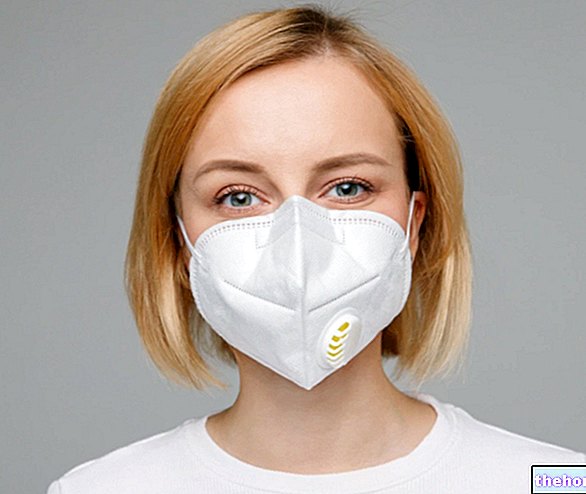Generality
Thalassotherapy is a particular form of therapy, based on the curative action of the marine climate, the sea itself and its products (sand, algae, mud, etc.).

In reality, the real benefits deriving from the application of thalassotherapy have not been scientifically proven. However, the use of this therapeutic form seems to be particularly useful as an adjunct in the treatment of various pathologies of the skin, of the osteoarticular system and of the airways; moreover, its use seems to be widespread and constantly increasing.
How does it work?
As mentioned, thalassotherapy is based on the potential curative action of the marine environment and its components.
More specifically, thalassotherapy is based on a particular principle according to which sea water would have a composition almost superimposable to that of human plasma and that the salts and trace elements contained in it are highly bioavailable and easily absorbed by the patient through the pores of the skin.
Always according to this principle, the assimilation of these trace elements and these salts would allow to favor the restoration of the equilibrium of the organism, also increasing the resistance to external aggressions and producing stimulating and revitalizing effects.
In any case, thalassotherapy - in addition to using the same sea water - also exploits other components of the marine environment to convey the constituents present in it to patients. In this regard, in fact, mud and sand are also used (sandblasting ) and even algae which - growing in sea water - are able to absorb its precious components, as well as being endowed with interesting phytotherapeutic properties (as, for example, occurs in the case of red algae).
Indications
Thalassotherapy is used as an adjuvant therapy especially in the treatment of:
- Skin disorders, such as eczema, psoriasis, erythema, dermatitis and skin blemishes such as cellulite.
- Diseases of the airways and respiratory system in general, such as sinusitis, catarrhal affections, bronchitis, colds, cough and other inflammatory diseases.
- Osteoarticular and muscular pathologies, disorders and pains, both of a rheumatic and traumatic nature.
Thalassotherapy treatments
As stated, thalassotherapy is based on the use not only of sea water, but also of other components which together constitute the entire marine environment.
In the light of what has just been said, therefore, it can be said that thalassotherapy can include various treatments, which differ from one another for the marine component they exploit.
These treatments will be briefly described below.
Marine climatotherapy
Marine climatotherapy is a thalassotherapy treatment based on the beneficial effects that the components of the marine climate can exert on the organism.
Among these components we remember: solar radiation (see heliotherapy), marine aerosol, temperature range and atmospheric pressure.
In particular, the marine aerosol is one of the fundamental elements of climatotherapy. In fact, this aerosol is constituted by the water that evaporates from the sea carrying with it the salts and ions contained in it and considered beneficial for the organism. inhaled in this way is particularly useful in cases of upper and lower respiratory tract disorders.
Solar radiation, on the other hand, seems to play a positive role for the skin and for some of the diseases connected to it, for the bones and even for the neuroendocrine system.
Sea water bath
Bathing in sea water is the characteristic treatment of this alternative form of therapy, which is thalassotherapy.
This type of treatment directly exploits the sea water in which the patient is immersed. The immersion can take place either in the same sea - or, depending on the case, in the ocean - or it can take place inside special swimming pools or tubs. located inside suitable structures.
Bathing in sea water can be partial or total and can be:
- Hot, in this case we speak of marine balneotherapy, which is carried out at temperatures of 37-38 ° C inside special tubs. The hot baths usually last about twenty minutes;
- Cold, in this case, however, the sea water is at temperatures between 20 ° C and 25-27 ° C, the patient can be immersed in tubs or swimming pools, or directly in the sea.
Furthermore, this treatment can be carried out both with the exclusive use of sea water, and with the addition to the latter of:
- Algae and / or their products or derivatives;
- Carbon dioxide (carbonic bath);
- Ozone (ozonated bath).
In addition to all this, bathing in sea water may or may not be associated with a hydromassage.
It should be noted that in these cases, when the above elements are added to the sea water, we speak of an "activated bath".
Sandblasting
Sandblasting (psammatotherapy), otherwise defined "sand baths", exploit the action of hot sand (which can reach temperatures of 50 ° C) and of the trace elements and sea salts that have deposited on the sea water. its granules.
Normally, sandblasting is done outdoors on a beach well heated by solar radiation, where holes are dug enough for the patient to lie down. Once lying down, the patient is covered in sand and his head - which, of course, it is not covered with sand - it must be kept in the shade.
The sand bath usually lasts 15-20 minutes, which can then be gradually increased up to approximately 40 minutes.
Sandblasting seems to be particularly effective for the treatment of disorders of the musculoskeletal system of both rheumatic and traumatic nature, such as, for example, chronic rheumatism, osteoarthritis and after-effects of traumatic forms.
Where is it practiced?
Thalassotherapy is an alternative form of therapy that is practiced in the so-called SPA or in real thalassotherapy centers specialized in this field.
The establishments in which thalassotherapy is carried out are, of course, located near the sea.
Contraindications
The use of thalassotherapy is generally contraindicated in patients suffering from pathologies of the nervous system (such as, for example, epilepsy) and / or cardiovascular pathologies (such as, for example, hypertension).
Furthermore, due to the high concentration of iodine in the marine environment, thalassotherapy is usually prohibited for patients suffering from thyroid gland diseases.
Finally, there are some contraindications for the use of thalassotherapy even in pregnant women and in mothers who are breastfeeding. However, there are numerous centers that have made specific risk-free courses available and suitable for this category of patients as well.
In any case, in case of particular pathologies or disorders, and in case of pregnancy and / or breastfeeding, before resorting to thalassotherapy, it is always good to ask for the advice of your doctor.

-cos-cause-e-disturbi-associati.jpg)

























